#mt. st. helens
Explore tagged Tumblr posts
Text
I am absolutely fascinated by the ecological recovery of the immediate blast zone around Mt. St. Helens. It was wiped clean of almost all life during the 1980 eruption, and in the aftermath it was decided that this area would be allowed to recover on its own, rather than being deliberately replanted by timber companies with a monoculture of Douglas fir, or by conservationists with a biodiverse array of native plants. This means the area is giving scientists an unprecedented close-up look at how an ecosystem recovers from such a massive natural disturbance.
This isn't to say there haven't been a few nudges by human activity. Rumor has it that local fishing clubs sneaked up to Spirit Lake and illegally stocked it with trout, though I've also heard claims that they arrived from a nearby stream, possibly originating from the higher elevation St. Helens Lake (which may itself have been restocked by humans.)
But the single day--two years after the eruption--that a batch of northern pocket gophers spent on the mountain made a big difference in the recovery of plant communities. (By the way, the picture in the article appears to be a ground squirrel, not a gopher.) Over forty years after their sojourn, the sites they were temporarily introduced to show much better plant growth due to the mixing of the soil microbiome, to include mycorrhizal fungi, bacteria, and other microbes. This microbial jump-start was caused by the gophers' digging, demonstrating why fossorial (burrowing) animals are so important to ecosystems. Without them, soil microbial communities can stagnate, and in the case of areas damaged by massive disasters, a lack of fossorial species can make recovery take much longer.
Speaking of disasters, scientists also found that forests that had been clearcut prior to the eruption had poorer, less diverse microbial communities than areas that had been more mature or old-growth forests, even when both areas were given the gopher treatment. This is yet more evidence that clearcutting forests is terrible for local ecology, because it not only removes entire ecosystems above ground, but below ground as well. And it shows that mature and old-growth forests are better equipped to weather disasters, with their higher biodiversity overall.
If we've learned anything ecologically from the 1980 eruption, it's that nature is incredibly resilient if we just give it the space to recover. The problem is that we keep poking at the wounds we create, not allowing them to heal over properly. By using more sustainable forestry practices, using resources more wisely, and preserving mature and old-growth forests, we increase the likelihood that the deeply intertwined life-support systems the planet provides (and which we, and all life, rely on) will remain functional in spite of our efforts to tear them apart in the name of resource extraction.
#Mt. St. Helens#volcano#geology#ecology#gophers#mammals#animals#wildlife#nature#science#scicomm#PNW#pacific Northwest#Washington#environment#conservation#clearcutting#logging#forests#fungi
544 notes
·
View notes
Text
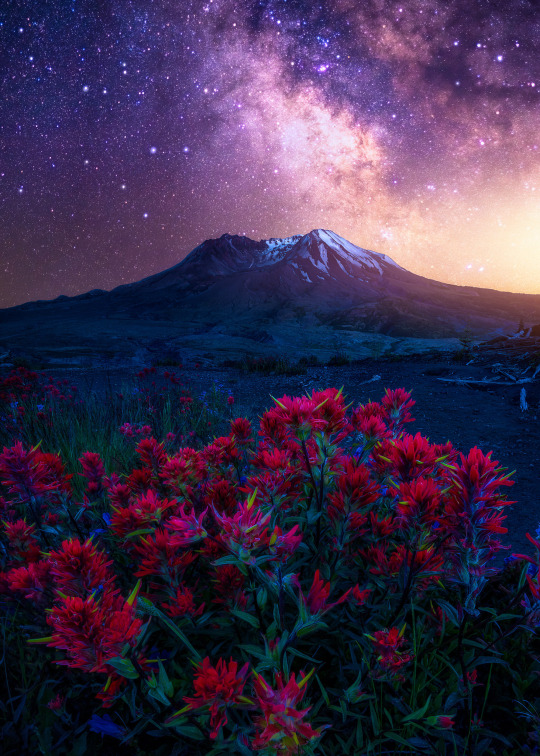
"The Cosmos" | Mt. St. Helens, WA || Chris Williams
#mount saint helens#mountain#mountains#mt. st. helens#volcano#milky way#stars#wild flowers#flowers#chris williams#nature#landscape
1K notes
·
View notes
Text

59 notes
·
View notes
Text

mt. st. helens reflected in spirit lake postcard ca. 1900-1907
218 notes
·
View notes
Text

Mt. St. Helens, Washington, 1991.
Recently I discovered a trove of photos I took on my first extended visit to the blast zone of St. Helens eleven years after the eruption. Revegetation of the hillsides denuded by the blast had just begun. The once densely forested hillsides were still mostly barren.
#landscape#vulcanism#blast zone#vegetation#mt. st. helens#washington state#1991#photographers on tumblr#pnw#pacific northwest
47 notes
·
View notes
Text

Stump of Mt. St. Helens from highway to Johnston Visitor Center, 2016.
#landscape#vulcanism#eruption#mt. st. helens#washington state#2016#photographers on tumblr#pnw#pacific northwest
37 notes
·
View notes
Text
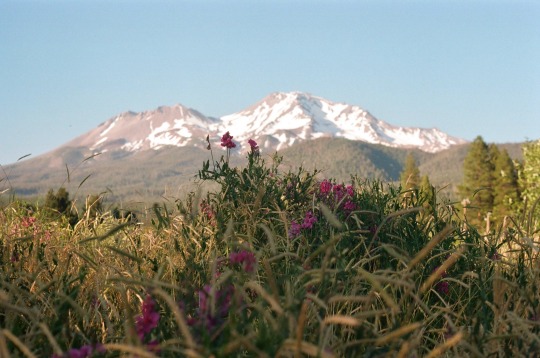
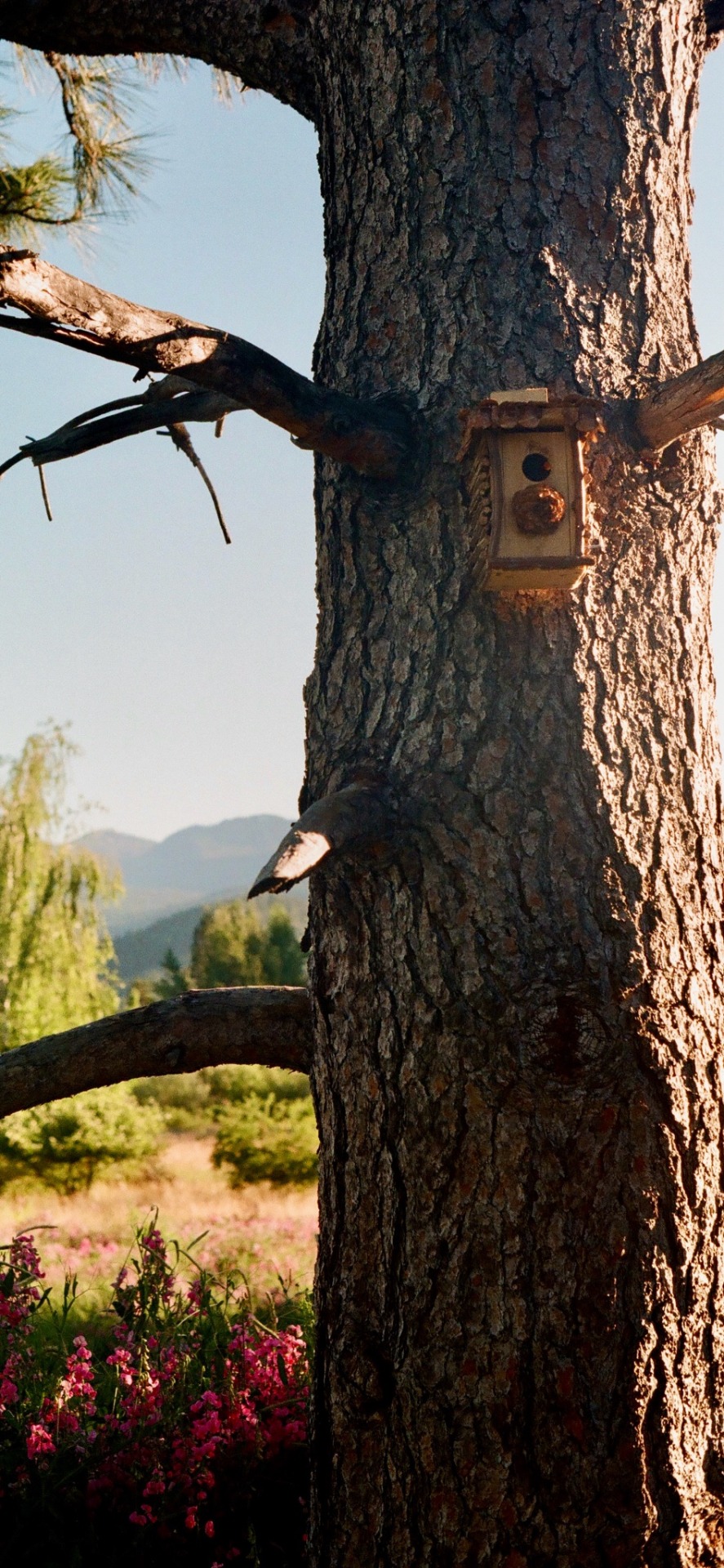

in the mountains w/ kodak gold
#photography#35mm#35mm film#analog photography#film photography#35mm photography#filmisnotdead#mountains#nature#waterfall#nature photography#snoqualmie#mt. shasta#mt. st. helens#washington state#pacific northwest#kodak gold 200
32 notes
·
View notes
Text
youtube
The eruption of Mt. St. Helen's seems so long ago, but it was "only" 44 years ago. I don't recall ever seeing this video, or one like it, but for the first time I am feeling the power of that eruption by watching this. At 1:12 in the video, this particular perspective ends and another, far inferior, begins, so just watch until 1:12 and get the jolt.
Here's a current view of the eruption site. The photo was taken by Jack Helean on July 5, 2024:

9 notes
·
View notes
Text
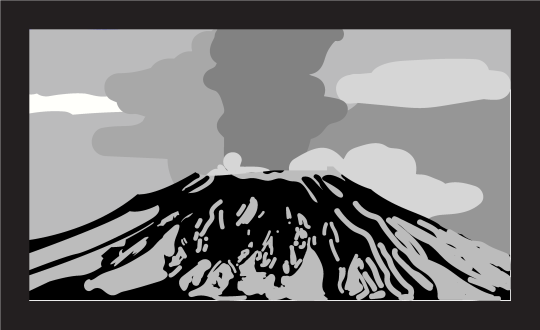
"Vancouver! Vancouver! This is it!" - The final words of David A. Johnston
Beginning in March 1980, a series of seismic and volcanic acitivties were taking place in and around Mount St. Helens, a stratovolcano in Skamania County, Washington. As time continued onward into April and May, a bulge on the northern slope would grow due to an injection of magma at shallow depth below the mountain. Also within that time, people who were living within the danger zone such as in the Spirit Lake area would be given the order to evacuate but also provide them time to gather as much items as possible.
On May 18th 1980 at 8:32 AM, it happened. First, a magnitude-5.1 earthquake triggered a massive landslide tearing off a large chunk of the mountain, this would be one of the largest landslides in recorded history. Then, an ash cloud would rise to about 70,000 feet into the heavens above with Pyroclastic Flows devouring everything within their five mile paths, from entire forests and wildlife to cars, houses, and people who were close by.
The eruption would become the worst volcanic eruption in American History. While Mt. St. Helens has had some eruptions before, this one would be the most well documented of the volcano's eruptions. A total of 57 people were killed in the eruption, among the deceased includes 30-year-old USGS volcanologist David A. Johnston, 83-year-old businesssman Harry R. Truman, and 48-year-old photographer Robert Landsburg. Out of all the 57 people who perished in the erupton, only 26 of the bodies have been found, the remaining 31 bodies were never found and still remain missing to this day.
After the eruption ended, the surrounding landscape had been turned into a hellish wasteland with dead trees laying everywhere, a stark contrast to what it was prior. In fact, the 39th U.S. President Jimmy Carter stated that the moon looked like a golf course in comparison to the devastation caused by the volcano. And as for the mountain itself, its summit was replaced by a giant horsehoe-shaped crater.
The total cost of damage done by the eruption would end up being about $1 billion (or $3,881,055,825.24 in 2025 currency) having a huge effect on timber, farming and fishing industries within the region. The Summit of Mt St. Helens was owned by the Northern Pacific Railroad which would end up under ownership of the Burlington Northern Railroad in 1970. After the volcano blew up, the BN would donate the land to the government in exchange for land elsewhere, the end result would be the formation of the Mount St Helens National Volcanic Mounument.
Despite the damage that has been done by the volcano, the surrounding region has since begun it's gradual recovery as new trees and plants would be growing in place of the original vegetation. The ash from the volcano, despite being hot and toxic at first, would be used to regrow new crops thanks to sporting essential nutrients. Wildlife living in the region prior to the eruption has also made their return to reclaim their homes.
But the 1980 eruption wouldn't be the last one, for a series of smaller and less violent eruptions would take place in the following years. And then from October 2004 to January 2008, volcanic activity took place forming a large lava dome in the center of the crater, though it wouldn't be tall enough to rise above the crater. Today, the 1980 eruption of Mt. St. Helens continues to remain not only the deadliest and costliest volcanic eruption in modern U.S. history, but also has made the mountain one of the world's most famous volcanoes, being up there in the ranks of Mount Vesuvius, Mount Kilimanjaro, Mauna Loa, Mount Tambora, Krakatoa, Yellowstone, and some others to name a few.
This illustration was made in rememberance of the 57 people who lost their lives in the eruption, may they rest in peace.
#Mt. St. Helens#Mount Saint Helens#Skamania County#Washington State#Volcano#Vector Art#Digital Art#Digital Illustration#Digital Drawing#Illustration
2 notes
·
View notes
Text
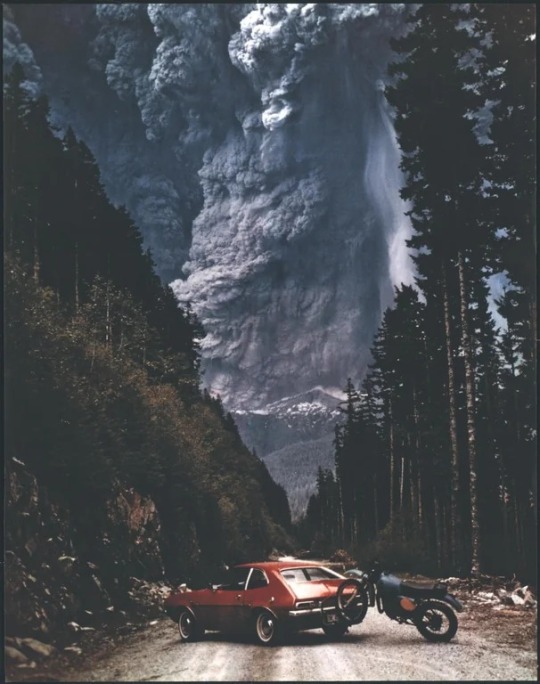
Richard Lasher was on his way to ride his dirt bike when Mt. St. Helens erupted in front of him. (1980)
3 notes
·
View notes
Text
youtube
From the morning when I rise from my bed 'Til the evening when I lay my head in slumber Oh, the loss of you does wreck my days Leaves me with a violent hunger I will never be free from you 'Til I escape the lion's jaw There's no welcome in the end There's no reason to return again
The mountain stood so large We were humbled We walked a high and lonely path The sun beat down on the ground We looked around us There were no trees there We found a creek there We dipped our feet there We were alone there There was still hope there There had been a great disaster The hot winds came just after A tremendous shock was felt Survivors often tell The trees all hit the ground Death was all around And not a single lonesome sigh
The example lay before you You knew what you had to do You have a pressure in you To destroy the one who loved you The death was all around
You were hotter to me than the sun That burned me up the day we went To mount saint helens And if the special death you gave to me Is the prize i get to take home solemnly And suffer with the fact that I could never be your friend I could never come back home again
7 notes
·
View notes
Text
Ecology is one of those disciplines where there is just so, so much we don't understand yet. Yes, we know that the many species within a given ecosystem have a widespread, complex network of interrelationships, but we only have the barest understanding of a fraction of them. It's like having a symphony where you've heard everyone playing, but you only have some notes from some of the musicians' sheet music, and so you can't yet put together how it all works.
In this case, we're seeing just how important northern pocket gophers (Thomomys talpoides) are to their ecosystems. After the devastating eruption of Lawetlat'la/Loowit/Mt. St. Helens in May 1980, the land was left burned and covered in tons of ash and tephra. While some zones further out from the mountain were replanted by timber companies, the area directly around the eruption site has been allowed to recover naturally because this offers North American scientists an unprecedented chance to see how an ecosystem recovers after such a large eruption, at a place that is easily accessible.
When a small number of gophers were returned to an ash-covered area of the mountain for just twenty-four hours in 1982, they kicked off what would be a forty-year study in ecological resilience. In areas with no gophers, there were only a few struggling plants born from seeds transported by birds, while in places where the little mammals were able to burrow and turn over dirt, scientists found 40,000 individual plants. This was due to the fact that the gophers were able to free soil fungi and other microbes beneath the ash and give them a chance to repopulate closer to the surface where they normally would be found. In turn, seeds of plants that had mycorrhizal relationships with the fungi, or which otherwise benefited from the increased microbial biodiversity, flourished.
And forty years later, the pattern still stands, with the gophers' work reverberating to this day. If one small mammal can have such a profound effect in a miniscule amount of time, imagine what happens when we reintroduce extirpated species to other eplaces. The volcanic area may be left to repopulate naturally as scientists continue to study it, but there are countless badly damaged ecosystems in need of restoration. The results of this experiment clearly support the importance of returning as many native species to an ecosystem as possible, because even those that may seem insignificant have invaluable contributions to make to the whole.
#nature#wildlife#animals#ecology#environment#science#conservation#scicomm#pnw#pacific northwest#Mt. St. Helens#Lawetlat'la#Loowit#habitat restoration#restoration ecology#gophers#Washington#good news
647 notes
·
View notes
Text

mt. st. helens chrome postcard ca. 1940s
13 notes
·
View notes
Text
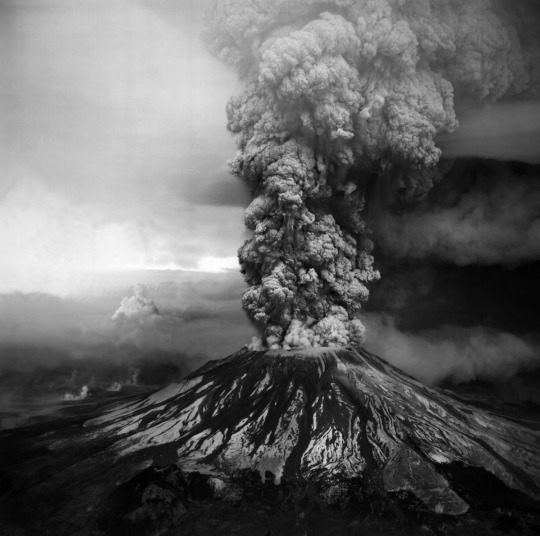
May 18, 1980, Mt. St. Helens blows its top. 57 people lost their lives, making it the most deadly-ever volcanic event in the lower 48 states in recorded history.
0 notes
Text
The Cataclysmic Events of 3 Nephi 8 Unraveled
In our exploration of natural disasters, the sheer force of volcanic eruptions stands out as truly mesmerizing. These eruptions reshape landscapes, alter climates, and impact the lives of millions.
Exploring the Catastrophic Plinian Eruption in 3 Nephi 8 In the dramatic pages of 3 Nephi 8, we witness an unparalleled cataclysm that reshaped the Nephite world. This event isn’t just a legendary tale; it’s a compelling link between scripture and natural phenomena. Imagine earthquakes shaking the ground and darkness covering the land, punctuated by fiery volcanoes with Plinian eruptions casting…
#3 Nephi 8#Book of Mormon#Come Follow Me#Crucifixion of Christ#Judgment#Mt Vesuvius#Mt. St. Helens#Natural Catastrophe#Plinian Eruptions#Volcanic Eruptions
0 notes

